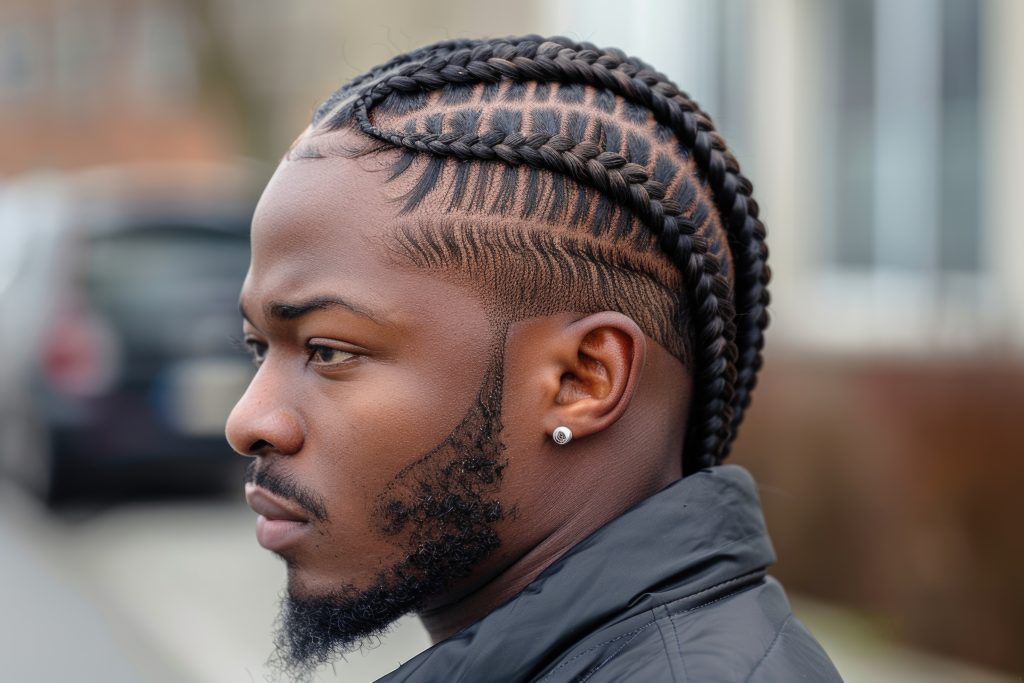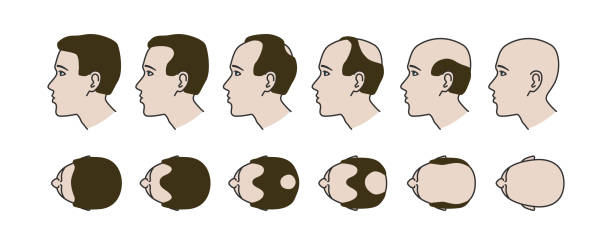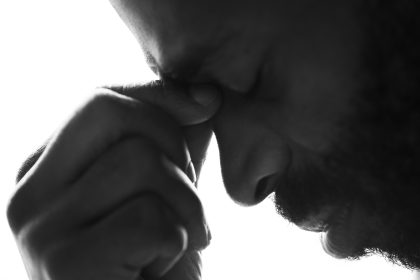Are men balding too early? Some studies suggest yes—with stress, processed foods and environmental pollutants as main triggers, but most genetics are hairy culprits too.
Back in my campus years, there was a period where natural hair was all the rage. Those of us who had texturized our hair to ‘tame’ our afros while in high school were suddenly grabbing scissors to do the ‘big chop’ ready to embrace our natural hair journeys.
We tended to our afros with sheer dedication; spending hours and money we didn’t have to buy all the products that promised miraculous hair growth inside 30 days. Needless to say, our wallets suffered, and our hair didn’t magically grow overnight.
As a budding blogger, I launched a natural hair social media page to share tips with fellow enthusiasts across Kenya. But amidst the chatter about curl patterns, protective hairstyles and shea butter, I kept getting urgent messages from men: “Doc, my hair’s disappearing, and I need help before my mates start roasting me!” So, today, we’re tackling male baldness—that sly condition turning full manes into shiny domes. We will unpack what it is, why it happens and how you can deal with it.
Male pattern baldness, or androgenetic alopecia for those who love big words, is the most common type of hair loss in men.
Hairline recedes due to genetics and a hormone that shrinks hair follicles
It is when your hairline starts receding, or your crown thins out, leaving a shiny patch that catches the sun. It typically follows an “M” shape or a full-on bald crown, and it’s driven by two main culprits: genetics and a hormone called dihydrotestosterone (DHT).
DHT shrinks your hair follicles over time, making hair thinner until they wave goodbye altogether.
Globally, research shows 30-50 percent of men experience some hair loss by age 50, with up to 80 percent affected over their lifetime. In Kenya, specific statistics are thin like some hairlines, but walk through the streets of Nairobi, Mombasa, or Kisumu, and you’ll spot plenty of shiny heads.
It is a universal club, and Kenyan men are card-carrying members. It can start as early as the late teens, but it’s more common in your 30s and 40s, often being a family trait passed down like a beloved inheritance.
The main driver is genetics. If your dad or grandpa had a receding hairline, you might be next in line. The androgen receptor gene, often inherited from your mother’s side, plays a big role.
If your mum’s dad or brothers went bald early, your scalp might speed up hair loss
This gene, located on the X chromosome you get from your mother, influences how sensitive your hair follicles are to DHT. If your mum’s dad or brothers went bald early, your scalp might be more prone to DHT’s effects, speeding up hair loss.
Then there’s DHT, a byproduct of testosterone that binds to hair follicles in sensitive areas like the temples and crown, shrinking them until they produce only wispy hairs or none at all. Age also plays a part, by your 50s, your scalp might decide it’s time for a break.
Are men balding earlier now? Some studies suggest yes—modern factors like stress, processed diets, and environmental pollutants might be triggering hair loss in men as young as their 20s, though genetics remains the biggest player. However, more research is needed on this. Other factors like hormonal imbalances or harsh hair treatments (yes, those tightly worn durags over a period of time can stress your scalp) worsen things, but genetics and DHT lead the charge in male baldness.
While male pattern baldness is the star of the show, other types can affect men. One is Alopecia Areata, an autoimmune condition causing patchy hair loss, like random bald spots on your scalp or beard.
Some baldness is caused by rocking tight cornrows, dreadlocks or any hairstyle that tugs your hairline

The other isTelogen Effluvium, which is temporary shedding triggered by stress, illness, or medications, causing more hair to fall out than usual.
Lastly, Traction Alopecia, which is caused by tight hairstyles or constant pulling, is common if you’re always rocking tight cornrows, dreadlocks or any hairstyle that causes tension and tug at your hairline.
Male pattern baldness is distinct because it follows a predictable pattern and is progressive, unlike other types, which may resolve or have different causes.
Symptoms and Stages: Hairline creeps back, forming an “M” or “U” shape
When it comes to male pattern baldness, you might first notice your hairline creeping back, forming an “M” or “U” shape, or thinning at the crown. It is gradual, with no pain or itching—just a slow farewell to your locks.

The Hamilton-Norwood scale (the most widely used classification system for measuring male pattern baldness) maps it out:
- Stage 1-2: Minimal recession, barely noticeable.
- Stage 3-4: The “M” shape forms, with thinning at the crown.
- Stage 5-6: The bald spot grows, connecting with the receding hairline.
- Stage 7: Full-on baldness on top, with just a band of hair on the sides.
Diagnosis: In rare cases, a scalp biopsy or blood tests are done
Doctors and hair specialists – called trichologists – diagnose baldness by checking hair loss patterns and family history, with most cases having a genetic link. They might use a dermoscope to check for shrinking follicles or do a hair pull test (gently tugging to see if hairs come out easily).
In rare cases, a scalp biopsy or blood tests (checking thyroid, iron, or vitamin levels) rule out other causes like nutritional deficiencies, hormonal imbalances or infections. If your hair loss looks patchy or sudden, see a dermatologist to ensure it’s not something else.
Balding hits younger men hardest, sometimes triggering anxiety
In Kenya, thick hair is often linked to youth and confidence—so when it starts thinning, it can sting. Many guys feel older overnight, stressing about looks, dating, or even work. Research shows hair loss hits younger men hardest, sometimes triggering anxiety.
But here’s the good news: baldness is becoming a power move. More men are shaving it off and owning the look with swagger. It is not about losing hair—it is about gaining confidence. The choice is yours: fight it or rock it. Either way, you’re in control.
Treatment options include hair transplants and injections using your own blood
If you’re keen to keep your hair, there are several treatment options:
- Minoxidil – Rub this liquid (two per cent or five per cent) on your scalp daily. It can regrow hair but may cause early shedding or irritation. (Available in Kenyan pharmacies.)
- Finasteride – A daily pill that blocks hair loss hormones. Works for 2 in 3 men, but rare side effects like low libido are possible. Ask a doctor first.
- Hair Transplants – Moves hair from the back of your head to bald spots. Permanent but expensive, with full results in 5-6 months.
- PRP Therapy – Injections using your own blood to boost growth. New in Kenya but promising.
- Laser Combs/Devices – Uses light to stimulate hair. Mixed results, but some clinics offer it.
- Quick Fixes – Wigs, hair fibres, or stylish caps for instant coverage.
- Eat Right – Protein (beans, eggs, fish), add vitamins (A, B, C, D, iron, zinc). Load up on veggies and fruits.
- Stress Less – Too much stress = more shedding. Walk, laugh, exercise—keep calm to keep hair.
- Be Kind to Your Hair – Avoid tight styles, harsh chemicals, or over-cutting. Gentle care equals a healthier scalp.
Bald is beautiful, so wear it with pride
Hair often symbolises youthful vitality, and losing it can feel like a blow to identity, which sometimes matters socially and professionally. Yet, attitudes are shifting, with many now sporting bald heads with confidence, turning a former stigma into a badge of pride, often with a hearty laugh and a quip about their “new foreheads.” Whether you fight it with minoxidil, wigs or a transplant, or embrace it with a clean shave and a bold smile, know you’re not alone. Bald is beautiful, so wear it with pride.
Dr Nyandia Maina is a Medical Doctor, Photo-Essayist and Creative Non-fiction Writer.























